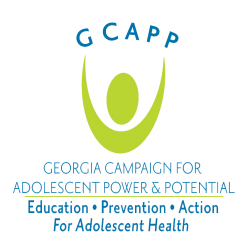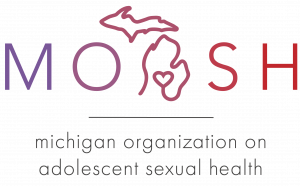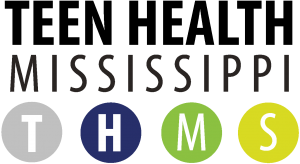All people deserve access to medically accurate and developmentally appropriate information related to their sexuality and sexual health. Yet often, individuals with intellectual and developmental disabilities (IDD) are not included in sex education. Training participants will have an opportunity to identify and examine values, practice intentional language, work on concrete skills for adapting lesson plans, share challenges and successes, and learn best practices for implementing Universal Design for Learning (UDL) through lecture, peer-to-peer conversation, modeling, and skill-building activities. This full-day, interactive training was informed by a team of multi-disciplinary experts and a focus-group of youth self-advocates. We hope you can join us for this brand-new training intended for educators, service providers, and anyone who is working directly with individuals with IDD. Registration link here.
Training Hub
The Sex Education Collaborative Training Hub lists trainings for sex educators, facilitators, and other professionals on best practices for sharing important information with clients and the public. From teaching anatomy inclusively to effectively addressing bias in the classroom to addressing racial justice and equity in sex education, the Training Hub includes trainings, technical assistance, and policy support from state, regional, and national leaders in the field of sex education.
Please note: The Training Hub includes both in-person and online professional trainings. If you see a training you are interested in and it isn’t listed as virtual, please reach out directly to any of our members to find out what's possible!
Trainings Offered by State-Based and National Organizations
Displaying results 16 - 20 of 130Sexuality Education Tools for the IDD Community
- Indicator 1 (K-12): Demonstrate three techniques to create an inclusive and affirming learning environment. (S)
- Indicator 3 (K-12): Describe three elements of a trauma-informed approach to sex education.
- Indicator 4 (K-12): Demonstrate three strategies of a trauma-informed approach to sex education (e.g. giving trigger warnings before content on sexual assault and allowing students the right to pass as appropriate, etc.). (S)
- Indicator 1 (K-12): Describe the importance of teachers’ maintaining professional boundaries when teaching sex education.
- Indicator 3 (K-12): Demonstrate how to reduce the impact of educators’ passive and/or active personal disclosure on the educational environment. (S)
- Indicator 4 (K-12): Explain the roles and responsibilities of a mandated reporter.
- Indicator 5 (K-12): Explain the state- and district-mandated reporting requirements and procedures.
- Indicator 2 (K-12): Demonstrate three student-centered instructional approaches that support a variety of learning styles. (S)
- Indicator 3 (K-12): Explain the differences between positive vs. shaming approaches to teaching sex education.
- Indicator 5 (K-12): Describe three effective strategies for practicing skills with students.
- Indicator 7 (K-12): Demonstrate the ability to analyze and tailor lesson plans to match the age, developmental stages, cultural backgrounds, and other identities of students. (S)
- Indicator 1 (K-12): Describe three distinguishing characteristics between healthy and unhealthy relationships, involving family, friends, and/or romantic partners.
- Indicator 2 (K-12): Explain three ways that healthy relationships can positively impact personal well-being.
- Indicator 3 (K-12): Describe three strategies for teaching students communication skills.
- Indicator 5 (K-12): Describe three ways to help students set and respect personal boundaries in relationships.
- Indicator 1 (K-12): Explain three reasons why it is important to respond to every question students ask when teaching sex education.
- Indicator 2 (K-12): Demonstrate the ability to effectively respond to three different types of challenging questions. (S)
- Indicator 1 (K-12): Describe three health (e.g. physical, social and/or emotional) and/or academic benefits of sex education for young people
- Indicator 1 (K-12): Explain the differences between personal and universal values relating to sexuality.
- Indicator 2 (K-12): Describe how verbal and nonverbal expression of personal values, and comfort with topics related to sex education, could impact one’s teaching
- Indicator 3 (K-12): Explain the importance of educators refraining from sharing their personal values when implementing sex education.
- Indicator 4 (K-12): Demonstrate the ability to respond effectively to students’ values-based comments and questions. (S)
Periods and Wet Dreams: Teaching Puberty in Elementary School
Puberty - a time of great, and sometimes daunting, change for both young people and the adults in their lives. This interactive, full-day training will provide educators, school nurses, youth-serving professionals, and other caring adults with skills and strategies for teaching pubescent youth about their changing bodies, emotional growth, and navigating the path to adulthood in a way that is inclusive of students of all genders and sexual identities. Through a social-emotional learning lens, participants will have an opportunity to engage in lessons and activities that will build their own skills to teach anatomy, menstruation, hygiene, cultivating empathy, and more. Registration link here.
- Indicator 1 (6-12): Explain fertilization, implantation, conception, and how pregnancy occurs.
- Indicator 1 (K-12): Demonstrate three techniques to create an inclusive and affirming learning environment. (S)
- Indicator 2 (K-12): Demonstrate three strategies for creating culturally responsive classrooms. (S)
- Indicator 4 (K-12): Demonstrate three strategies of a trauma-informed approach to sex education (e.g. giving trigger warnings before content on sexual assault and allowing students the right to pass as appropriate, etc.). (S)
- Indicator 1 (K-12): Demonstrate the ability to build rapport with students. (S)
- Indicator 2 (K-12): Demonstrate three student-centered instructional approaches that support a variety of learning styles. (S)
- Indicator 3 (K-12): Explain the differences between positive vs. shaming approaches to teaching sex education.
- Indicator 4 (6-12): Demonstrate how to use the experiential learning cycle when teaching. (S)
- Indicator 5 (K-12): Describe three effective strategies for practicing skills with students.
- Indicator 6 (K-12): Describe three strategies for actively involving parents, caregivers, and other trusted adults in a sex education program.
- Indicator 7 (K-12): Demonstrate the ability to analyze and tailor lesson plans to match the age, developmental stages, cultural backgrounds, and other identities of students. (S)
- Indicator 1 (K-12): Describe three distinguishing characteristics between healthy and unhealthy relationships, involving family, friends, and/or romantic partners.
- Indicator 2 (K-12): Explain three ways that healthy relationships can positively impact personal well-being.
- Indicator 3 (K-12): Describe three strategies for teaching students communication skills.
- Indicator 5 (K-12): Describe three ways to help students set and respect personal boundaries in relationships.
- Indicator 2 (K-12): Define sexual orientation and sexual identity, including that everyone has both.
- Indicator 3 (6-12): Explain the difference between sexual orientation, sexual behavior, and sexual identity.
- Indicator 4 (K-12): Demonstrate the use of inclusive and affirming language. (S)
- Indicator 7 (K-12): Identify three credible, medically accurate, youth-friendly resources that can provide information or support related to sexual orientation.
- Indicator 1 (K-12): Describe how puberty prepares the human body for the potential to reproduce.
- Indicator 2 (K-12): List three physical, three social, and three emotional changes that occur during puberty.
- Indicator 3 (K-12): Identify three practices that students can adopt for maintaining healthy habits beginning during puberty.
- Indicator 1 (K-12): Explain three reasons why it is important to respond to every question students ask when teaching sex education.
- Indicator 2 (K-12): Demonstrate the ability to effectively respond to three different types of challenging questions. (S)
- Indicator 1 (K-12): Describe three health (e.g. physical, social and/or emotional) and/or academic benefits of sex education for young people
- Indicator 2 (K-12): Describe state and/or district laws, policies, and standards that relate to sex education where one teaches.
- Indicator 1 (K-5): Explain the benefits of teaching young children the medically accurate terms for genitals.
- Indicator 2 (K-12): Demonstrate the ability to use medically accurate terms for sexual and reproductive anatomy, including all external genitals. (S)
- Indicator 3 (K-12): Explain the function of the individual sexual and reproductive body parts and how they typically work.
- Indicator 1 (K-12): Explain how availability of supportive school staff, presence of Gay-Straight Alliances (GSAs), gender-inclusive curricular resources, and the presence of comprehensive enumerated anti-harassment school policies are related to improved school climate for students of all gender identities.
- Indicator 2 (K-12): Demonstrate the use of inclusive and affirming language. (S)
- Indicator 3 (K-12): Define gender identity and sex assigned at birth.
- Indicator 4 (K-12): Explain how gender identity and gender expression are distinct from each other and from sexual orientation.
- Indicator 7 (K-12): Identify three credible, medically accurate, youth-friendly resources that can provide information or support related to transgender and gender expansive people.
- Indicator 8 (K-12): Explain why it is essential to include positive portrayals of transgender and gender expansive people in lessons.
- Indicator 9 (K-12): Demonstrate three strategies that can be used to make lessons affirming for transgender and gender expansive people. (S)
- Indicator 3 (K-12): Explain the importance of educators refraining from sharing their personal values when implementing sex education.
- Indicator 4 (K-12): Demonstrate the ability to respond effectively to students’ values-based comments and questions. (S)
Sexual Violence in the Media
The media plays a huge role in how we think about sex and sexuality. Using TV clips, movie scenes, ads and songs, we will explore how the media portrays sexual violence. We will also discuss how we can use the media to have constructive conversations regarding sexual violence in our daily lives.
- Indicator 3 (K-12): Describe three strategies for teaching students communication skills.
- Indicator 4 (K-12): Describe three strategies for incorporating the positive and negative impacts of communicating through technology into lessons on healthy relationships.
Inclusive Sex Education for LGBTQIA+ Youth
Many LGBTQIA+ youth thrive in school, relationships, and their communities, but it is important to recognize that LGBTQIA+ youth are also at high risk for experiencing violence and bullying and have disproportionately high rates of unintended pregnancies, sexually transmitted infections, depression, and substance abuse. Comprehensive and inclusive sex education can help improve these outcomes for all youth. This training will provide an overview of the unique challenges and needs of LGBTQIA+ youth and allow participants to discuss and practice strategies to promote more inclusive classrooms and curriculum.
In this training, participants will:
- Gain an understanding of the needs of LGBTQIA+ youth, including those related to sex education.
- Define LGBTQIA+ terminology.
- Review relevant and current data on LGBTQIA+ youth.
- Look at the relationship between sex education and LGBTQIA+ youth.
- Discuss underlying causes of the increased risk for unintended teen pregnancy among LGBTQIA+ youth, including greater societal constructs and systems of oppression.
- Discuss the creation and content of the LGBTQIA+ Inclusivity Toolkit.
- Apply inclusivity principles in reviewing and adjusting curriculum.
- Indicator 1 (K-12): Demonstrate three techniques to create an inclusive and affirming learning environment. (S)
- Indicator 2 (K-12): Demonstrate three strategies for creating culturally responsive classrooms. (S)
- Indicator 1 (K-12): Explain how availability of supportive school staff, presence of Gay-Straight Alliances (GSAs), LGBQ-inclusive curricular resources, and the presence of comprehensive, enumerated anti-harassment school policies are related to improved school climate for students of all sexual orientations.
- Indicator 2 (K-12): Define sexual orientation and sexual identity, including that everyone has both.
- Indicator 3 (6-12): Explain the difference between sexual orientation, sexual behavior, and sexual identity.
- Indicator 4 (K-12): Demonstrate the use of inclusive and affirming language. (S)
- Indicator 6 (K-12): Explain three ways that LGBQ+ youth are at disproportionate risk for health disparities.
- Indicator 7 (K-12): Identify three credible, medically accurate, youth-friendly resources that can provide information or support related to sexual orientation.
- Indicator 8 (K-12): Explain why it is essential to include positive portrayals of LGBQ+ people in lessons.
- Indicator 9 (K-12): Demonstrate three strategies that can be used to include positive portrayals of LGBQ+ people in lessons. (S)
- Indicator 1 (K-12): Describe three health (e.g. physical, social and/or emotional) and/or academic benefits of sex education for young people
- Indicator 2 (K-12): Describe state and/or district laws, policies, and standards that relate to sex education where one teaches.
- Indicator 1 (K-12): Explain how availability of supportive school staff, presence of Gay-Straight Alliances (GSAs), gender-inclusive curricular resources, and the presence of comprehensive enumerated anti-harassment school policies are related to improved school climate for students of all gender identities.
- Indicator 2 (K-12): Demonstrate the use of inclusive and affirming language. (S)
- Indicator 3 (K-12): Define gender identity and sex assigned at birth.
- Indicator 4 (K-12): Explain how gender identity and gender expression are distinct from each other and from sexual orientation.
- Indicator 6 (K-12): Explain three ways that transgender and gender expansive youth are at disproportionate risk for health disparities.
- Indicator 7 (K-12): Identify three credible, medically accurate, youth-friendly resources that can provide information or support related to transgender and gender expansive people.
- Indicator 8 (K-12): Explain why it is essential to include positive portrayals of transgender and gender expansive people in lessons.
- Indicator 9 (K-12): Demonstrate three strategies that can be used to make lessons affirming for transgender and gender expansive people. (S)
- Indicator 1 (K-12): Explain the differences between personal and universal values relating to sexuality.
- Indicator 2 (K-12): Describe how verbal and nonverbal expression of personal values, and comfort with topics related to sex education, could impact one’s teaching
Building Self-Esteem and Body Confidence
After this workshop, participants will be able to explain appearance ideals that students encounter and where pressure to achieve them comes from.
This training is designed for:
- Teachers
- Substitute Teachers
- Counselors
- Coaches
- Parents
- Clergy
- Community Workers
- Educators
- Indicator 1 (K-12): Describe three distinguishing characteristics between healthy and unhealthy relationships, involving family, friends, and/or romantic partners.
- Indicator 1 (K-12): Describe how puberty prepares the human body for the potential to reproduce.
- Indicator 2 (K-12): List three physical, three social, and three emotional changes that occur during puberty.
- Indicator 3 (K-12): Identify three practices that students can adopt for maintaining healthy habits beginning during puberty.



